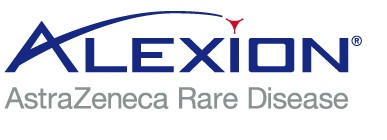
Credit: Andrew Brookes/Image Source/Getty
Far fewer people participate in the clinical trials of a drug than most people think. Compiling data from trials conducted around the world from 2015 to 2019, Germany-based data and business intelligence platform, Statista, found that the average number of people in a Phase 3 trial was about 528. That number can drop to just a few people for rare diseases. Therefore, post-marketing surveillance (PMS) following marketing authorization is crucial in confirming the effectiveness and safety of a drug.
“The information obtained from premarketing clinical studies has limitations,” says Toshitaka Yajima, head of Neurology, Medical Affairs, at Alexion Japan, a subsidiary of Alexion, AstraZeneca Rare Disease. Limitations may arise from the strict inclusion and exclusion criteria for participants in clinical trials. When a drug reaches the market, the range of patients expands dramatically, drawing in people of a wider age range, with various health conditions, or who are taking other medications.
“So, the important purpose of PMS is to confirm efficacy and safety under real world clinical conditions, and to collect long-term, real-world data,” says Yajima.
Although many countries expect pharmaceutical companies to apply their own PMS, Japan’s government mandates it as a regulatory requirement, and it is a rigorous process.
Real-world evidence
“In Japan, PMS takes approximately 4–10 years from the development of the implementation plan to the final report, and the data cover a broad range, like efficacy and concomitant medications,” says Yajima.
PMS in Japan must follow good post-marketing surveillance practice (GPSP), as defined by Japan’s Ministry of Health, Labour and Welfare (MHLW). This involves working with hospitals and clinics to develop a report that is reviewed by the MHLW.
The PMS data provide more information for the manufacturer of the medicine and healthcare practitioners. “With a PMS study, you can obtain data on efficacy and safety from hundreds of patients in the real-practice setting,” says Kimihiro Kasamo, vice president and general manager, Alexion Japan. “We follow a protocol and collect these data systemically.”

Alexion scientists examing images at their laboratories.
Usually, PMS involves following a patient for 1–3 years after they start taking medicine. Then, says Kasamo, “we can compare the clinical trial data and the PMS data.”
Clinicians can use that information when making decisions about the best care for a patient.
The benefit of tracking a treatment’s impact over time can be crucial. “It’s different to be exposed to a medication for one month, one year, five years, or a lifetime,” says Guido Sabatella, head of Neurology and Ophthalmology, Global Medical Affairs at Alexion. “These studies paint a picture on how the drug is used in the real world, in an uncontrolled environment,” according to Sabatella.
Tracking treatments
Alexion studies rare diseases, including two in the rare neurology space: generalized myasthenia gravis (gMG), which causes muscle weakness, and neuromyelitis optica spectrum disorder (NMOSD), which affects the central nervous system. The team at Alexion is now trying to determine if their real-world findings from the PMS studies are consistent with the findings from clinical trials. As Kasamo points out: “Our PMS studies systematically collect data from large populations.”
In assessing the value of PMS, Sabatella says, “The only way that this is meaningful is if we generate not only safety data but also clinically meaningful effectiveness data that the physician can use to help make decisions.” Although Alexion’s PMS studies focus on patients in Japan, Sabatella points out that “data that you generate in the country can potentially be used by physicians everywhere.”
For example, many patients with gMG or NMOSD receive very high, daily doses of corticosteroids. “In clinical trials for new treatments, the physicians cannot change the regimen of steroids because you would have a confused effect,” Sabatella says. “But in the real world, physicians will do whatever they think is good for specific patients.”
PMS studies reflect current practices with respect to how patients react to treatment in terms of tolerance and effectiveness in the real world. Understanding any potential benefits for patients depends on tracking this observational data.
Pushing PMS ahead
In the near future, Alexion hopes to collect even more information from PMS studies with integrated analysis. “We have already started that a little bit, and we hope to provide more reliable efficacy and safety data by integrating data from each PMS,” Yajima says.
Obtaining robust PMS data requires collaboration. “We really appreciate the physicians and patients who collaborate with us on PMS,” says Sabatella. Ultimately, that teamwork helps everyone. As Sabatella says: “The more real-world data that we put out, the more physicians can decide what’s right for their patients.”



 Nature Index Health Sciences 2024
Nature Index Health Sciences 2024